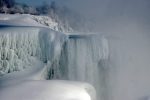Pugsy wrote:robysue wrote:As a math person, I'm concerned that the Large Leak flag in the Resprionics machine is NOT a close estimate at all. I'm also concerned that there seems to be NO documentation in (a) the user manual for the machine itself, (b) the documentation for EncoreViewer, and (c) the documentation for EncorePro that lets a person determine just what the PR engineers think a Large Leak is and when the PR engineers believe the quality of the therapy and the reliability of the data starts to get compromised. Resmed is acting much more responsible here---even if their choice of Mr. Green Smiley Face and Mr. Red Frowny Face are insultingly stupid ways to tell the user there is a serious problem with leaks
I hear you and I agree but not much we can do about it. Frustrating? Yes.
To quote someone whom I never thought I'd quote:
You betcha!
Personally it's not a big issue for me since I so seldom have any leaking big enough to worry about. And I've learned to interpret the "raw" data of the total leak graph: As long as it's flat and at or below the Swift FX intentional leak for my pressure(s), I know I don't have any leaks to worry about. Heck, I wouldn't even get worried if I had a flat leak line just above the published Swift FX intentional leak rate. And the fact that my flat leak rate graph has a tendency to bounce around from nights with a near constant leak rate of 17 L/min to nights with a near constant leak rate of 20 L/min? I don't let it bother me: The leak rate is an approximate rate anyway and there is a margin of error in both the mask's expected leak rate and the machine's ability to measure it.
But as a mathematician, I believe the total lack of a description of what constitutes a Large Leak is an issue in general for the users of PR machines: I can't help but wonder how many PR System One users are out there (and not on the board) who look at the machine's on-board Large Leak rate averages and see 0.0% time spent in Large Leak average night after night who assume all is well, but are also having problems typical of mouth breathing or who know they have problems with leaks because of air blowing in the eyes, but assume that nothing can or should be done because the Large Leak average reports 0.0% of the time in large leaks .... And then because the dry mouth becomes unbearable or they just can't stand the air blowing in their eyes one more night, just give up. And never tell their sleep doctor why---most likely because they never see the sleep doctor again.
I just have to tell myself that Respironics doesn't really cater to me (the end user) and the DME's and doctors that they do cater to, don't/won't look at individual items. They just look for general "trends" if they look at all. Does it make it right? Of course not ...
But the issue is more than Respironics catering to the DMEs and doctors who just looking at trends (if anything):
The PR machines simply do not provide any meaningful TREND data about the leak rates because the raw data itself appears to be meaningless. So even if you've got a doc or DME who cares enough to give a cursory glance at the trend data because you are complaining constantly about a dry mouth, he or she can easily be persuaded to tell you there's no problem because the long term trend graph for Time Spent in Large Leaks is a nice, flat horizontal line at 0.0% night after night.
From a statistical point of view,
meaningless data is worse than
no data at all: With no data, you know you know
nothing. With meaningless data, the temptation is to claim you know
something when in reality you know
nothing.












